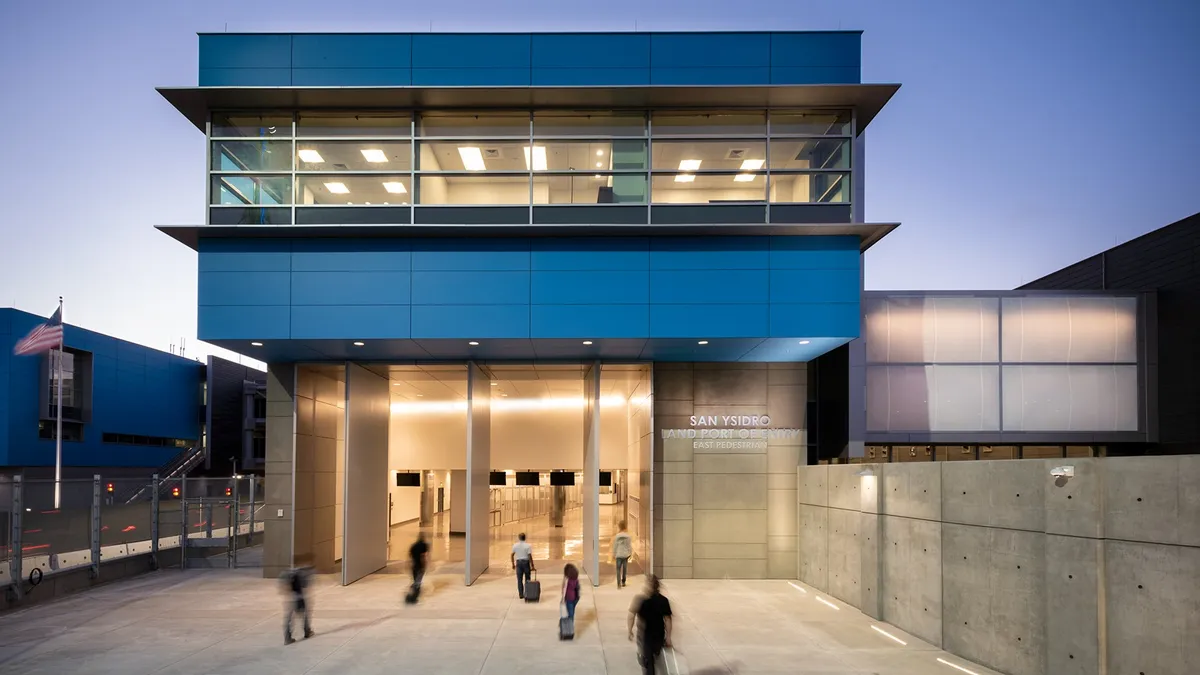Dive Brief:
- The U.S. General Services Administration announced Wednesday that, along with the Department of Homeland Security's Customs and Border Patrol, it officially opened a new 100,000-square-foot pedestrian processing building at the San Ysidro Land Port of Entry at the U.S.-Mexico border in San Ysidro, California. The project is the second phase of a $741 million, three-phase expansion, according to the design-build team of Stantec and Hensel Phelps.
- As part of the project, Stantec-Hensel Phelps reconstructed the port's pedestrian and bus inspection areas, which now offers 18 pedestrian lanes — and new inspection booths for a total of 22 — for U.S.-bound travelers, as well as four northbound bus-processing lanes. The new building will process U.S.-bound travelers. The team also completed the renovation of the port's historic 1930s Customs House, which is listed on the National Register of Historic Places. Stantec and Hensel Phelps added a second story to the building's north wing to handle processing of those travelers bound for Mexico.
- The San Ysidro entry point sees northbound crossing traffic of approximately 70,000 vehicles and 20,000 pedestrians every day, and, according to the GSA, it is the "largest and most complex" land port of entry in the western hemisphere. When the entire expansion is complete in 2019, officials expect to speed up processing time and experience less congestion at the crossing.
Dive Insight:
This is one U.S.-Mexico border construction project that has drawn praise from all sides, unlike the border wall that President Donald Trump's administration is promoting.
The president's 2016 campaign featured promises to build a new, impenetrable wall stretching the entire length of the border, with Mexico picking up the entire tab. Mexican officials have consistently denied that the country will pay for any wall construction.
Despite going through a prototype construction process near San Diego, current wall projects, limited by funding parameters, reportedly consist primarily of rebuilding or augmenting existing fence lines. But the administration has created controversy around that as well by declaring itself exempt from the usual environmental review procedures.
One thing that wall project has accomplished is creating blowback for the contractors involved. Many municipalities have limited or even outright barred participation in their public projects by those bidding for or performing work on the border wall. Los Angeles and Austin have joined other cities in adopting such policies, spurring organizations like the Associated General Contractors of America to call for more protections for wall contractors — i.e. security and reimbursement of vandalism damage. The organization also encouraged Attorney General Jeff Sessions to take legal action against public entities that blackball or otherwise punish wall contractors.











